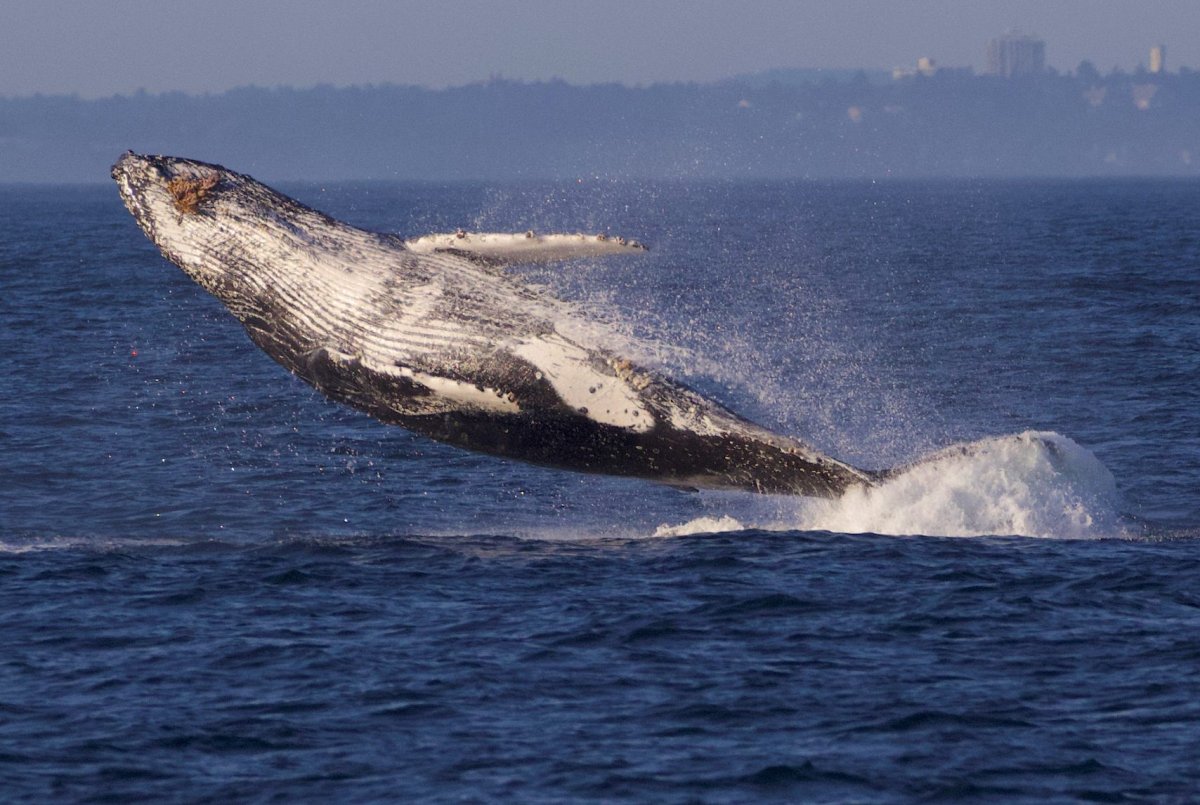Amazing images of breaching humpback whales captured Friday near Victoria are proof the local population is thriving, whale watchers and experts say.

Andrew Lees, the president and owner of Five Star Whale Watching in Victoria, said the two whales were spotted south of the B.C. capital around 7 p.m., during an evening tour.
Lees said in an email the whales began breaching after a large cargo ship passed by, forcing the animals to come up for air “at least a dozen times.”
“It was an incredible encounter and a perfect example of the humpback comeback that we are witnessing off Victoria,” he wrote.
Lees was not available for an interview Saturday, but the company’s operations manager, James Dale, said the number of humpback sightings off southern Vancouver Island has exploded over the course of his career.
“I was around when there were no sightings at all,” said Dale, who also works as a marine naturalist. “They had maybe three sightings over 35 years, up until 1997 . . . and pretty well every year since it’s increased.”

Get daily National news
WATCH: Humpback whale plays with log near Vancouver Island

The number of humpbacks off the coast of B.C. has been estimated at around 21,000, according to researchers from the Washington-based Cascadia Research Collective.
The Marine Education and Research Society (MERS) says at least 4,000 humpbacks existed off the west coast of Vancouver Island alone in 1905, before commercial whaling decimated the population.
By the 1970s, when legal whaling was ended for the species, researchers say only 1,400 existed in the entire northern Pacific Ocean. That includes waters off Washington state, Oregon and Alaska.
Dale says the recovery can largely be linked to the recovery of fish stocks in the region after the closures of commercial fisheries, along with limits on the fishing industry.
“What works is getting out of nature’s way,” he said. “It’s why we’re seeing humpbacks and killer whales most often, because they now have food in the area.”
Humpbacks most often eat smaller fish like herring, which has also seen signs of improvement despite the approval of a commercial fishery this past year.
WATCH: Inquisitive humpback whales cause damage while exploring B.C. boat

But researchers say the whales are still under threat from vessels that travel too close.
MERS launched an educational campaign earlier this year aimed at preventing catastrophic collisions in the water, dubbed “See a Blow? Go Slow!”
Under new federal rules, all vessels including whale watching boats must stay at least 200 metres away from humpbacks and all other species besides killer whales, who have a 400-metre limit.
Dale says it’s important anyone on the water is mindful they’re sharing the sea with whales, especially now that more of them are showing up off B.C.’s coast.
“The vessel operators are sincere in looking for more information about how to slow down and keep their distance,” he said.
“With more showing up, it’s requiring more of us to change our ways and compensate for them.”









Comments